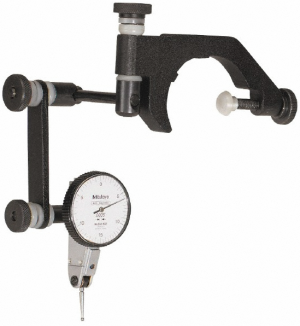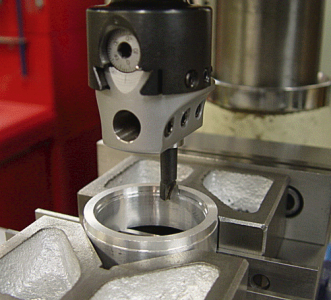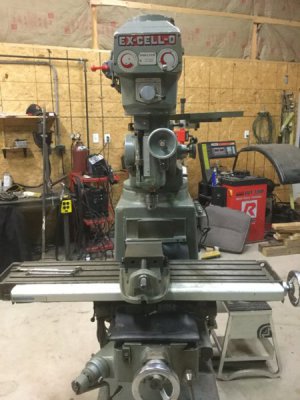Congrats on the mill and welcome to the site! Loaded question on the tooling by the way. You will potentially spend as much on the tooling as the mill (eventually).
You'll want some end mills to do the real work. No problem going directly in a collet in my experience. I only use collets on my Jet JVM-830 mill, mostly use an ER-32 collet chuck on my Bridgeport.
You'll want an edge finder to locate your work. The mechanical ones work great. Google "Tom's Techniques" for a nice web site showing how to use one. In the mean time, you can use a piece of paper and a dowel pin or flipped over drill bit in a collet to locate. Mount the pin in the collet, and slowly bring the table up to the work with a piece of paper in between. Tug back/forth on the paper as you advance the table until you pin the paper. 20 lbs. paper is about 0.003" thick, so figure another 0.001" to the actual work, then the radius of the pin you were using and set your hand wheel to zero. This is the part where I say you'll LOVE having a DRO at some point.
A set of parallels is nice to set work up off the bottom of the vise. Also, a good selection of T-nuts, studs, clamps, etc. for securing work to the table if it doesn't fit in the vise. As mentioned above, some sort of indicator to tram and head and orient work square to the table. There's a mounting bracket (picture below) for mounting an indicator to the spindle for centering the table under the spindle, checking tram of the head, square vise jaw up to the table, etc.
You'll want some sort of measuring device like calipers and/or mics too. I tend to use mics to check thickness of cuts as they aren't as tall as a dial caliper, don't run into the spindle and have to move the table. I have a good selection of both. Some DyKem for laying out work, scribe, etc. Hammer and center punch too. I use a wiggler to position center punched holes under the spindle. Again, "Tom's Techniques" is very informative. Tubalcain (Mr. Pete222) on YouTube is a good resource too, though you have to wade through 15 minutes of commentary (can be humorous and educational) for 5 minutes of content.
You mentioned a boring bar set. You'll need a boring head like the picture below.
Other than that, it really depends on your projects. There isn't only one way to do most things, you can spend money on things to make it more convenient to do certain tasks, or budget the funds elsewhere. Case in point for me is center finding. I have a few of the mechanical edge finders, a laser edge finder, and a few of the electronic edge finders. I use all of them (tend to go to the electronic one if the material is conductive), but could get away with only the mechanical ones (look like a steel dowel pin).
Then it goes on and on . . . I have a set of stubby drill bits dedicated to the mills. They're called "screw machine drill bits" and are great on a mill. Lots shorter than jobber length drill bits so you don't have to run the table down as drills tend to be longer than end mills. Also have angled gauge blocks, wavy parallels, adjustable parallels, thin parallels, right angle head for the Bridgeport (makes it into a horizontal mill), rotary table, dividing head for gears, 5-C collet index blocks in square and hex, co-axial indicator, LED work lights, chip brush, tweezers for slivers, drill chucks with various straight shanks (too lazy to change collets, happen to be using a 3/8" end mill and need to drill a hole, use the drill chuck with the 3/8" straight shank. Have the same set up for a 1/2" collet).
Sorry to go on and on, just thinking what's in my mill tool cabinet as I type. I have over/under reams that are 0.001" over and under 1/8" through 1/2" holes by 1/16's (under size for a permanent pin, over size for a removable pin). Deburring tools to break/clean up the edge of work. Ball end mills, carbide, high speed steel, radius end mills (look like radius router bits for woodworking), 1-2-3 blocks, V-blocks, height gauge, and probably a few things I'm forgetting.
I'm self-taught, so others with more experience will chime in. I'm blessed with a VERY understanding wife who doesn't bat an eye when I spend money on my shop. I've impulse bought a lot of stuff that's mentioned above that you really don't need; more than two ways to skin a cat. But the $500 or so I spent on the 4-axis DRO on my Jet mill was the BEST investment I've ever made. No necessary as hand wheels alone were used for probably 200 years. But it's like looking at a 75-foot long driveway with 6" of snow to clear; nice to have a snowblower instead of a shovel.
Bruce







